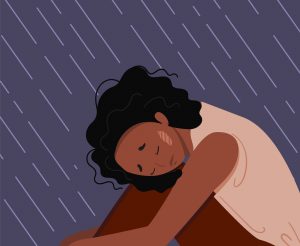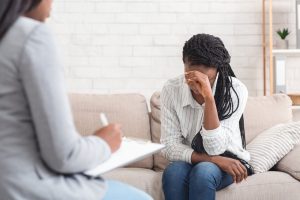Human beings are social creatures by nature. They need care and nurturing in their infancy to properly form bonds with caregivers. These bonds teach security and help bolster individuals and their social development with others they meet. Future intimate relationships and friendships are dependent upon initial bonds. Healthy and secure bonds with the primary caregiver translate to healthier social interaction in the future.
John Bowlby, famous psychoanalyst, worked extensively in the area of attachment. His attachment theory today remains a benchmark for understanding individuals who suffer various attachment disorders stemming from their infancy and early childhood.

The article, “What Is an Attachment Disorder?” by Amy Morin examines the various types of attachment disorders. The article discusses the origins of attachment disorders, the types, and how they manifest during childhood and later in life. Morin states,
“An attachment disorder is a condition that affects mood or behavior and makes it difficult for people to form and maintain relationships with others. These conditions usually begin in early childhood, but attachment issues may also persist into adulthood. Attachment issues are not an official diagnosis, but people use the term to refer to an insecure attachment style in adults. Adults with insecure attachment styles may express avoidance or ambivalence in relationships or behave in disorganized or inconsistent ways.”
“What Is an Attachment Disorder?”. Amy Morin. November 14th, 2022. VeryWellMind
To read the entire article, please click here
Commentary
Attachment disorders can play havoc with individual’s future relationships and how they form future bonds. It is so critical to give little children the love and nurture they need. When a child’s needs are not met, they can lose trust. Without trust, the child is becomes untrusting and unable to trust other caregivers or form other bonds. Bowlby noticed this in his observations of little babies that were cared for when they cried or were hungry as opposed to babies that were left to cry by their parents or their needs were not met. This created unhealthy bonds with the caregiver and proceeded forward. What should have been a healthy bond that is trusting and secure, the child exhibited lack of trust and various insecurities.
Clinical Attachment Disorders
The Diagnostic and Statistical Manuel of Mental Disorders recognizes two distinct types of attachment disorders. They both are due to lack of care and needs met at a young age and both exhibit insecurity and lack of trust but they manifest differently. The first is Disinhibited Social Engagement Disorder in which the child and later the adult exhibit problems forming true and lasting relationships with others but will look to form superficial bonds that are not permanent. In children, this is displayed with a lack of shyness around strangers or other adults. In teen years, they may outwardly form relationships but they are unable to find connection with others and true meaning. This obviously can lead to many superficial issues.

The second type of attachment disorder is Reactive Attachment Disorder. The child and later adult are unable to form new bonds with anyone. They are quiet, untrusting of caregivers, and avoidant of forming new relationships. Many are unable to form the necessary connection to have any type of meaningful relationships. They in turn will jump from relationship to relationship without having any true connection or meaning.
Characteristics of Attachment Disorders
Insecure attachment disorders form due to the lack of security that most children receive at an early age. Without the security and love, the child grows into new relationships with serious trust issues. Anxious-Insecure Attachment is the labeled term. The child exhibits with the primary caregiver a very needy and clingy relationship that pushes for and craves attention but due to the lack of emotional support leads to the numerous issues of mistrust and anxiety in adult relationships. Anxiety apart from a partner develops and a range of issues can erupt within the relationship itself. These individuals can become very possessive and clingy in a relationship.
The other spectrum involves Avoidant-Insecure. This behavior as opposed to clingy and anxious behavior looks to avoid. These types of children avoid future relationships with adults and as adults, themselves, have a difficult time ever forming permanent bonds with another person. As children they will look for others to meet needs and form superficial bonds. They will become unhealthy independent of others. In future relationships, they can elusive or afraid to commit.
There are also a variety of Disorganized-Insecure attachments where rage or emotion overtake individuals or chaotic anxiety.
The Importance of Secure Attachment
Obviously life is about relationships and social bonds. A secure attachment permits trust. In turn a healthy attachment permits one to be trusting, open, available, sensitive, responding and accepting to others. Those without form bonds that are clouded in emotional rage, distrust, anxiety and avoidance.

In grief and loss, attachment is key. The greater the attachment, the greater the loss and adjustment. Individuals who have healthy relationships grieve the loss but with less complications due to emotional barriers that prevented the relationship from being more healthy. If a parent passes, an adult who has a attachment disorder may have conflicting emotions regarding the loss and not process the loss the same way as a person with a healthy relationship and bond. The sting of grief is still great within a normal bond and could still due to other implications become complicated, but unhealthy attachments can bring other emotional baggage. Grief Counselors who are not licensed need to recognize possible attachment disorders and refer individuals to licensed counselors who can better help them with the complications of the loss.
Helping Children with Attachment Disorders
Beyond therapy from a licensed counselor, children can benefit from consistency, schedule and establishing boundaries. It is important to discuss emotions and how one feels. The goal is to help the child feel some sort of security with guaranteed promises and actions to meet the needs that were not met before.
Conclusion

Individuals who due to lack of care in infancy and young childhood will experience avoidant behaviors or anxious behaviors in future relationships. They will have difficulty forming healthy bonds with others. Grieving the loss of others can also become more complicated when attachment disorders are present.
Please also review AIHCP’s Grief Counseling Certification and see if it meets your academic and professional goals. The program is online and independent study and open to qualified professionals seeking a four year certification in grief counseling.
Additional Resources
“4 Types of Attachment Disorders”. March 23, 2017. The Holy Mess. Access here
“Types of Attachment Styles and What They Mean”. Rhona Lewis. September 25th, 2022. Healthline. Access here
“What Is Reactive Attachment Disorder?”. Amy Morin. October 11th, 2021. VeryWellMind. Access here
“Attachment” Psychology Today Staff. Psychology Today. Access here






















